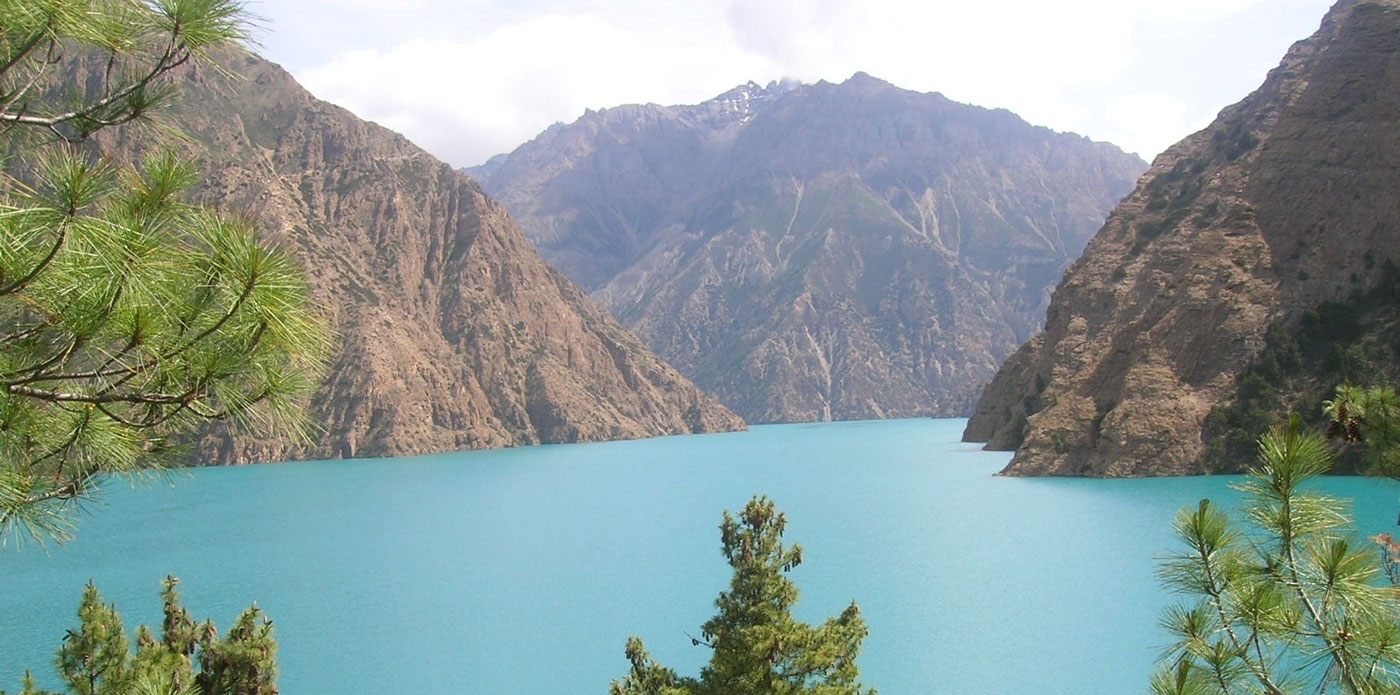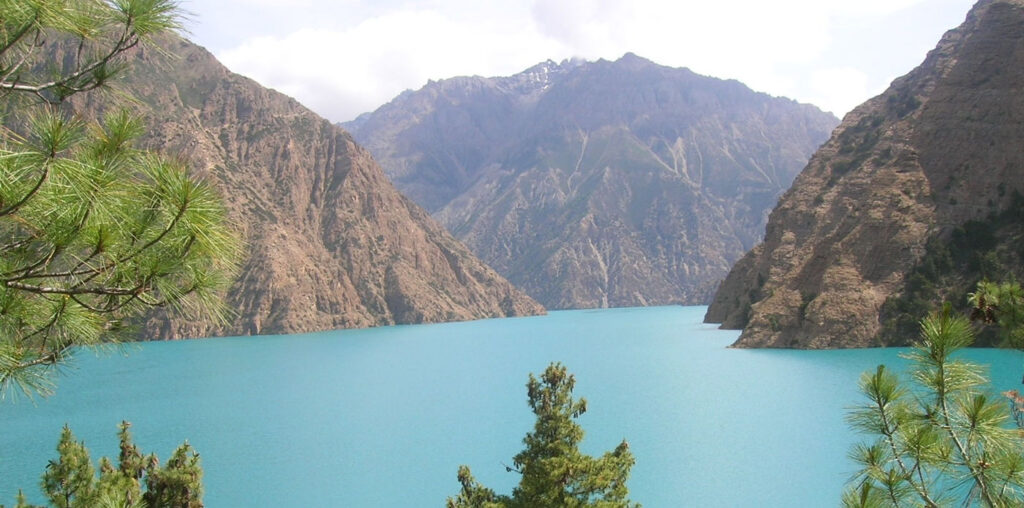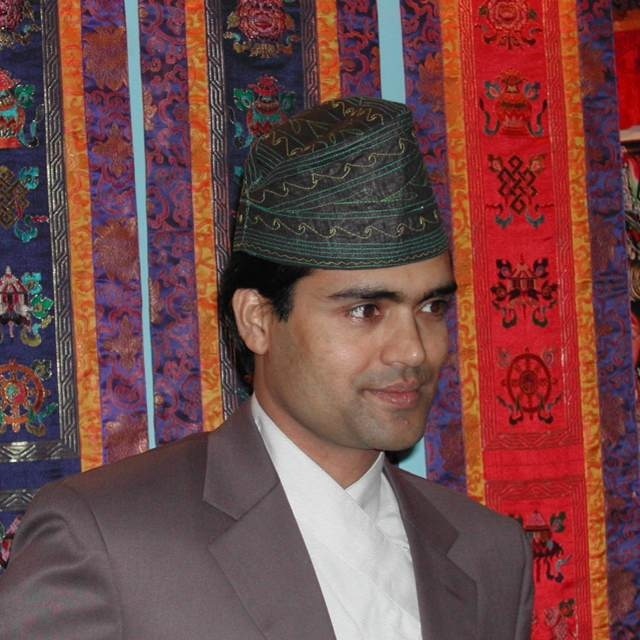×
![Trip Gallery Image]()
❮
❯

Lower Dolpo Trekking
Lower Dolpo Trek with Phoksundo Lake and high passes Numa La and Baga La – a remote Himalayan adventure combining rugged landscapes, Tibetan culture, and breathtaking views of Dhaulagiri and Kanjirowa Himal.
Country
Nepal
Duration
21 Days
Difficulty
Hard
Trip Type
Trekking
Max Altitude
5309m/17421ft
Best Season
Mar-May, Sep-Nov
Accomodation
3***Hotel + Logde accommodation on twin sharing bed basis during the Trekking.
Meals
All meals (Lunch, Dinner and Breakfast) with cup of hot drinks during the trekking.
Start/End Point
Kathmandu
Highlights & Overview
Lower Dolpo Trekking has only been permitted since mid-1989. Lying to the west of the Kali Gandaki Valley, Dolpo is located inside the Shey-Phoksundo National Park in mid-western Nepal, behind the Dhaulagiri massif and towards the Tibetan plateau. The region offers opportunities to visit ancient villages, high passes, beautiful lakes, isolated Buddhist monasteries. In addition, you get to experience the vast array of wildlife inhabiting the region, including Blue sheep, Mountain Goat, Jackal, Wolf and the legendary Snow Leopard.
The Lower Dolpo area is isolated due to the difficult topography, Therefore, it is one of the remotest and least exposed areas of Nepal. Hence, the Lower Dolpo trek offers opportunity to meet the people and their lifestyle almost untouched and unexplored.
Visit the Shey-Phoksundo National Park and the “Tarp Valley”, which are the most interesting and lively places in western Nepal. You’ll surely feel overwhelmed by this place and its people, completely uninfluenced by modernization. The landscape, flora and fauna, picturesque mountain views, rivers and springs, flat roofed houses, chortens, monasteries and beautiful lakes are unique to this area.
This remains a truly isolated corner of Nepal and time has stood still here for centuries. Tribes from Tibet continue to live, cultivate and trade here the way they have done for hundreds of years. Most treks into Dolpo take from 14 to 30 days. The best time to trek here is towards the end of the monsoon season Sept to November. Shorter Dolpo treks are possible by flying into the air strip at Jumla.
How hard is the Lower Dolpo Trekking?
The Lower Dolpo trek is not a easy trek, however, not too difficult as well. If you have no previous trekking experience this trek will be quite challenging due to many up and down hills, as well as the high elevation. The trekking trail passes along narrow slippery gorges road, where you have to walk carefully. Nature Trail guides will provide support if there is a difficult or slippery patch ahead. Walking slow and comfortably helps to build your confidence on the trail. Due to landslides in recent years we need to make some changes to the traditional caravan routes. Since we do this trek every year, your guide knows the way and will make sure to use a safe trail. Another important thing that needs to be considered is the high altitude. To prevent high-altitude sickness, you need to walk slowly and steadily with many breaks on the way to acclimatize appropriately. We planned our trekking route based on this principle.Meals:
Breakfast (only) will be available in Kathmandu whereas all meals (breakfast, lunch and dinner) will be available during the trek. We can enjoy freshly-cooked, hygienic and nutritious meals on full-board basis prepared by our trained and experienced cook during the trek. Authentic Nepalese, Tibetan dishes as well as the more common international cuisine (Tibetan, Continental, Italian, Indian, etc.) will be available.Physical Condition & Experience Requirements:
Lower Dolpo Trek is categorized as a difficult trek. In such trek, you are likely to walk for 6-7 hours, cross steep, hilly terrain and occasional high passes of up to 5500m. You are likely to be in a remote environment with extreme weather on some days. You will also be facing high-altitude air with low levels of oxygen. Therefore, previous trekking experience, physical fitness and a positive attitude are essential. Exercising and jogging regularly for some weeks prior to the trip is a good idea to enhance our strength and stability. Past hiking experience is fundamental but no technical skill is required for this trip. It is vital for participants with pre-existing medical conditions such as heart, lung, and blood diseases to consult their doctor before taking the trip. It is also advised that you inform Nature Trail about your medical condition before booking the trek.Best Time to Travel:
Spring (March to May) and Autumn (September to October) are the best months for this trip. Since the Dolpo region lies in the rain shadow area formed by Dhaulagiri and Annapurna ranges, you can also take this trip during the Monsoon season (June to August).Short Itinerary
- Day 1: Arrival in Kathmandu (1350m/4429ft)
- Day 2: Kathmandu Sightseeing (1350m/4429ft)
- Day 3: Fly from Kathmandu to Nepalgunj (150m/492ft)
- Day 4: Fly from Nepalgunj to Juphal (2320m/7611ft), trek to Dunai (2850m/9350ft)
- Day 5: Dunai to Tarakot (2543m/8343ft)
- Day 6: Tarakot to Khani Gaon (2543m/8343ft)
- Day 7: Khani Gaon to Tarap Khola (3450m/11318ft)
- Day 8: Tarap Khola to Yak Kharka (3800m/12467ft)
- Day 9: Yak Kharka to Dho Tarap (4090m/13418ft)
- Day 10: Rest and Acclimatization at Dho Tarap (4090m/13418ft)
- Day 11: Dho Tarap to Tokyu Gaun (4200m/13780ft)
- Day 12: Tokyu Gaun to Numa La Base (4665m/15306ft)
- Day 13: Cross Numa La (5309m/17421ft), camp at Pelung Tang (4465m/14649ft)
- Day 14: Cross Baga La (5070m/16634ft), camp at Dajok Tang (4080m/13386ft)
- Day 15: Dajok Tang to Ringmo (3600m/11811ft)
- Day 16: Rest day at Ringmo, hike to Phoksundo Lake (3600m/11811ft)
- Day 17: Ringmo to Shyanta (2520m/8267ft)
- Day 18: Shyanta to Juphal (2320m/7611ft)
- Day 19: Fly to Kathmandu via Nepalgunj (1350m/4429ft)
- Day 20: Bhaktapur Sightseeing (1350m/4429ft)
- Day 21: Departure from Kathmandu (1350m/4429ft)
Price Includes
Price Doesn't Include
Lower Dolpo Trekking Itinerary
Day 1: Arrival in Kathmandu (1350m/4429ft)
Welcome to Nepal. Upon arrival at Tribhuvan International Airport, our representative will transfer you to your hotel. After rest, we take a short Thamel tour to explore shops, ATMs, restaurants, and money changers. At our office, we introduce you to the trekking guide, cook, and staff, and brief you on equipment and itinerary. Overnight at hotel.
Max Altitude
1350m/4429ft
Accomodation
Hotel
Meals
Breakfast
Day 2: Kathmandu Sightseeing (1350m/4429ft)
Explore UNESCO World Heritage sites in Kathmandu. Visit Pashupatinath Temple, an iconic Hindu shrine of Lord Shiva by the Bagmati River, and Boudhanath Stupa, one of the largest Buddhist stupas in the world symbolizing Mahayana philosophy. These sacred sites offer cultural, religious, and architectural insights. Overnight at hotel.
Max Altitude
1350m/4429ft
Accomodation
Hotel
Meals
Lunch, Dinner, Breakfast
Day 3: Fly from Kathmandu to Nepalgunj (150m/492ft)
Take a scenic flight to Nepalgunj, a bustling city near the Indian border. In the evening, explore the vibrant local market and experience the Terai lifestyle. Overnight at hotel.
Max Altitude
1350m/4429ft
Accomodation
Hotel
Meals
Lunch, Dinner, Breakfast
Day 4: Fly from Nepalgunj to Juphal (2320m/7611ft), trek to Dunai (2850m/9350ft)
Enjoy a dramatic flight to Juphal with views of Annapurna and Dhaulagiri. Begin trekking above the Bheri River through the Dolpo rain shadow zone, reaching Dunai, the district headquarters. Overnight at tented camp.
Walking time: 2–3 hours
Max Altitude
2850m/9350ft
Accomodation
Tent
Meals
Lunch, Dinner, Breakfast
Day 5: Dunai to Tarakot (2543m/8343ft)
Trek along the Bheri and Barbung rivers, through pine forests and terraced fields. Visit Sandul Monastery near the river junction and camp near Tarakot, a historic fortress town. Overnight at tented camp.
Walking time: 5–6 hours
Max Altitude
2543m/8343ft
Accomodation
Camping
Meals
Lunch, Dinner, Breakfast
Day 6: Tarakot to Khani Gaon (2543m/8343ft)
Follow the Tarap Chu River past terraced fields and rural villages. Cross suspension bridges and reach Khani Gaon for an overnight camp. Overnight at tented camp.
Walking time: 4 hours
Max Altitude
2543m/8343ft
Accomodation
Camping
Meals
Lunch, Dinner, Breakfast
Day 7: Khani Gaon to Tarap Khola (3450m/11318ft)
Trek through narrow gorges and steep rocky trails with wooden bridges along the river. Camp beside Tarap Khola, a wild and scenic river valley. Overnight at tented camp.
Walking time: 4–5 hours
Max Altitude
3450m/11318ft
Accomodation
Camping
Meals
Lunch, Dinner, Breakfast
Day 8: Tarap Khola to Yak Kharka (3800m/12467ft)
Ascend gradually along the river through high alpine landscapes. Stunning scenery makes the climb energizing. Camp at Yak Kharka. Overnight at tented camp.
Walking time: 4–5 hours
Max Altitude
3800m/12467ft
Accomodation
Camping
Meals
Lunch, Dinner, Breakfast
Day 9: Yak Kharka to Dho Tarap (4090m/13418ft)
Hike past juniper bushes and wildflowers into the dry inner Himalayan terrain. Arrive at Dho Tarap, a traditional Tibetan-influenced village with stone houses and Buddhist monasteries. Overnight at tented camp.
Walking time: 5–6 hours
Max Altitude
4090m/13418ft
Accomodation
Camping
Meals
Lunch, Dinner, Breakfast
Day 10: Rest and Acclimatization at Dho Tarap (4090m/13418ft)
Acclimatization day. Explore the village, interact with locals in homespun garments, and visit ancient monasteries of the Nyingmapa and Bonpo sects. Overnight at tented camp.
Max Altitude
4090m/13418ft
Accomodation
Camping
Meals
Lunch, Dinner, Breakfast
Day 11: Dho Tarap to Tokyu Gaun (4200m/13780ft)
Trek along the Tarap Chu River with views of fertile farmlands, colorful monasteries, and mountain valleys. Reach Tokyu village, home to Chiba sect communities. Overnight at tented camp.
Walking time: 5–6 hours
Max Altitude
4200m/13780ft
Accomodation
Camping
Meals
Lunch, Dinner, Breakfast
Day 12: Tokyu Gaun to Numa La Base (4665m/15306ft)
Climb steadily into rocky, high-altitude terrain. Short trekking day to conserve energy. Camp at Numa La base. Overnight at tented camp.
Walking time: 4–5 hours
Max Altitude
4665m/15306ft
Accomodation
Camping
Meals
Lunch, Dinner, Breakfast
Day 13: Cross Numa La (5309m/17421ft), camp at Pelung Tang (4465m/14649ft)
A challenging day as you cross Numa La Pass, the highest point of the trek. Stunning views of Dhaulagiri and barren Dolpo valleys. Descend to Pelung Tang. Overnight at tented camp.
Walking time: 6–7 hours
Max Altitude
5309m/17421ft
Accomodation
Camping
Meals
Lunch, Dinner, Breakfast
Day 14: Cross Baga La (5070m/16634ft), camp at Dajok Tang (4080m/13386ft)
Another adventurous day crossing Baga La Pass with views of Kanjirowa Himal. Descend through alpine meadows to camp at Dajok Tang. Overnight at tented camp.
Walking time: 5–6 hours
Max Altitude
5070m/16634ft
Accomodation
Camping
Meals
Lunch, Dinner, Breakfast
Day 15: Dajok Tang to Ringmo (3600m/11811ft)
Trek through forests and grazing pastures before reaching the picturesque Tibetan village of Ringmo near Phoksundo Lake. Overnight at tented camp.
Walking time: 3–4 hours
Max Altitude
3600m/11811ft
Accomodation
Camping
Meals
Lunch, Dinner, Breakfast
Day 16: Rest day at Ringmo, hike to Phoksundo Lake (3600m/11811ft)
Explore Phoksundo Lake, Nepal’s deepest turquoise lake. Visit Buddhist monasteries, Bonpo villages, and yak caravans. Overnight at tented camp.
Max Altitude
3600m/11811ft
Accomodation
Camping
Meals
Lunch, Dinner, Breakfast
Day 17: Ringmo to Shyanta (2520m/8267ft)
Descend through pine forests and rocky trails, passing Bonpo settlements before reaching Shyanta. Overnight at tented camp.
Walking time: 5–6 hours
Max Altitude
2520m/8267ft
Accomodation
Camping
Meals
Lunch, Dinner, Breakfast
Day 18: Shyanta to Juphal (2320m/7611ft)
Final trekking day. Climb gradually and then descend into Juphal, where the journey started. Overnight at tented camp.
Walking time: 5–6 hours
Max Altitude
2320m/7611ft
Accomodation
Camping
Meals
Lunch, Dinner, Breakfast
Day 19: Fly to Kathmandu via Nepalgunj (1350m/4429ft)
Fly from Juphal to Nepalgunj and onward to Kathmandu. Transfer to hotel for rest. Overnight at hotel.
Max Altitude
1350m/4429ft
Accomodation
Hotel
Meals
Lunch, Dinner, Breakfast
Day 20: Bhaktapur Sightseeing (1350m/4429ft)
Tour Bhaktapur, the city of devotees, with medieval architecture, wood carvings, and UNESCO heritage sites. Visit women empowerment projects. Overnight at hotel.
Max Altitude
1350m/4429ft
Accomodation
Hotel / Lodge
Meals
Lunch, Dinner, Breakfast
Day 21: Departure from Kathmandu (1350m/4429ft)
After breakfast, transfer to airport for your international flight. End of Dolpo trekking adventure.
Max Altitude
1350m/4429ft
Accomodation
Hotel
Meals
Breakfast
Packing Lists
Cloathing
Gears
Personal Items
Other Items You Can Bring
Elevation Profile
Trip Video
Frequently asked questions (FAQs)
Lower Dolpo Trekking Trek Questions
Reviews
USD 3400/Person
Group Booking Discount
- No. of people
- Price Per Person
- 1 Pax 3,400
- 2-3 Pax 3,060
- 4-9 Pax 2,720
- 10-14 Pax 2,550



